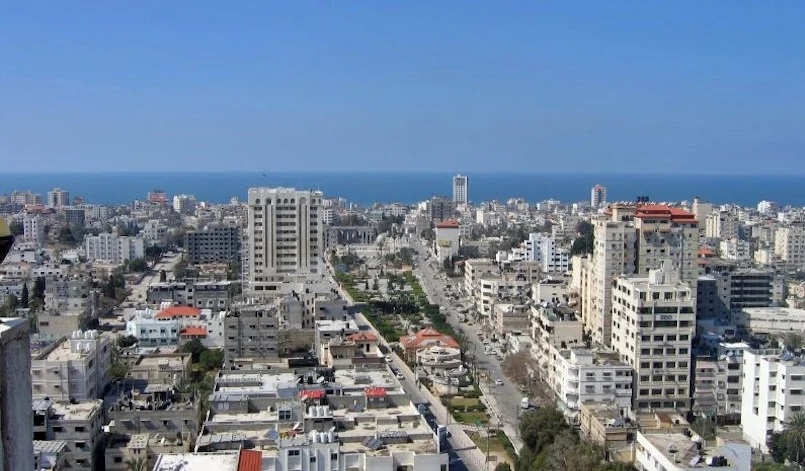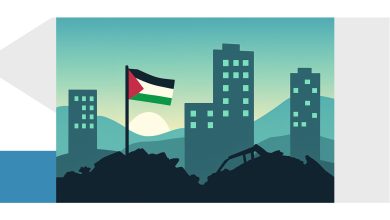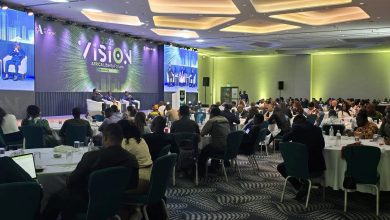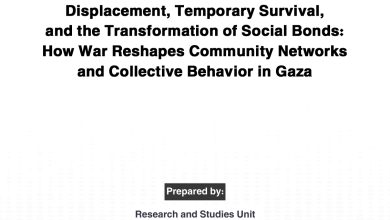COVID-19 in the Gaza Strip

By: Omar Shaban, NESA Alumnus, Founder and Director of Palthink for Strategic Studies
![]() The Gaza Strip did not need a new challenge that deepens its tragic and catastrophic reality. Gaza is a small area encompassing 200 square miles and a population of 2 million people, who have lived under siege for the last 14 years, suffering three bloody wars in 2008-2009, 2012 and 2014, in addition to dozens of short clashes. The Gaza Strip faces the corona challenge with poor capabilities and very limited resources.
The Gaza Strip did not need a new challenge that deepens its tragic and catastrophic reality. Gaza is a small area encompassing 200 square miles and a population of 2 million people, who have lived under siege for the last 14 years, suffering three bloody wars in 2008-2009, 2012 and 2014, in addition to dozens of short clashes. The Gaza Strip faces the corona challenge with poor capabilities and very limited resources.
The Covid-19 epidemic is killing thousands of people every day around the world, including the highly developed and wealthy countries, such as the United States and Europe, which have health systems that are the strongest in the world, so how does the Gaza Strip face this epidemic? How can this be done in light of the occupation, the blockade, the absence of financial safety networks, and the economic capability to combat the consequences of the disease that affects all aspects of life?
In a report issued by the United Nations in 2012, the Gaza Strip will be unlivable by 2020, in accordance with health, water, education, employment, and other standards. In Gaza, there is an average of 6 hospital beds for every 10,000 citizens, compared to more than 33 beds for the same number in Italy and 46 beds in Switzerland. In addition to the lack of beds, pharmacy shelves in the hospitals are empty, lacking even basic medicines and medical solutions, which forces some citizens to purchase their needs from pharmacies outside the hospital, where they are also scarce and are not always available to them. Even the medical staff, including doctors, nurses, and others, have been denied from receiving their full salaries for many years, and travel restrictions prevent them from receiving training and traveling abroad except in very limited cases.
The residents of the Gaza Strip have watched the appearance of Covid-19 with mixed feelings of anxiety and ridicule. What does it mean to close the borders between countries, when Gaza is besieged for 14 years? What does it mean to close airports and prevent travel from the airports of the world when Gaza has no airport and its people have been banned from traveling for 14 years? With the pandemic approaching the Middle East, including Israel and the territories of the Palestinian Authority, the conditions of the Gaza Strip created by the blockade and restrictions on entry and exit seemed to be a blessing to them. Finally, an absolutely unintended positive aspect of this blockade has emerged.
The number of Corona cases in Palestine reached 160, 12 of them in Gaza coming from the Rafah crossing with Egypt and the Beit Hanoun (Erez) checkpoint with Israel. Since mid-March, arrivals to Gaza have been placed in the 35 compulsory quarantine centers for a period of 14 days. Quarantine centers in hospitals, schools, and clinics are mainly working to strengthen the first line of defense against the outbreak of corona virus in Gaza, but it needs an increased supply of test strips, of which only 1,200 test strips have entered Gaza, and they are not sufficient to carry out the necessary checks to ensure the safety of those leaving the quarantine and monitoring the status of those infected in the hospital near the Rafah crossing.
In light of the state of emergency declared by President Mahmoud Abbas, which was extended to continue the closure of educational institutions, places of worship, commercial markets and some vegetable markets, which were replaced by allocating separate areas in several neighborhoods to compensate for the closure of the central markets to sell basic commodities; many companies and civil society institutions have resorted to partially or completely closing their offices while working remotely from home. This posed another challenge for the electricity and internet distribution companies to increase the hours of electricity connection and increase the capacity of the internet networks to deal with the excess demand due to the use of internet by employees and students. The state of emergency also affected other sectors such as transportation, which was previously dependent on the movement of students and employees between and within governorates, and the private sector, when many of its institutions were forced to lay off their employees or reduce the working hours to ensure their continued work and adherence to government decisions at the same time. This worsened the economic situation of the Palestinians in Gaza, where unemployment rates exceeded 75% before the current crisis, threatening the future of the youth and risking dangerous consequences of the increase in crime rates and the orientation of many young people to religious extremism and other far-reaching problems.
Some consumer-goods factories in Gaza’s industrial zone are still functioning. Some factories have doubled their production capacity of medical protection supplies. For example, a local factory provides most of the needs of hospitals and quarantine centers with masks and protective equipment for medical personnel and patients. This factory in the Gaza Strip exported large quantities of masks and protective equipment to Israel. This factory and others are totally dependent on importing production inputs from and through Israel.
As we have seen in many countries, the first wave of the virus was confined to cases from abroad, and the infection came through socializing with those who carry the disease from the countries from which they came. The leak of the infection from the quarantine centers through socializing with others from the society will have serious, uncontrollable consequences, if we take into account the circumstances of the Gaza Strip. The Gaza Strip suffers from a lack of ventilators that can save the lives of the sick by supporting the respiratory functions struck by the disease in its most dangerous stages. The number of those devices in Gaza is 62. Of those, only 20 devices are not already used by other patients who are not infected with Coronavirus, and some devices are not usable due to malfunctions and the need for spare parts that are not available.
The Gaza Strip has been ruled by Hamas for 14 years, an organization with a state of hostility with neighboring Israel, and an ideological rivalry with Egypt, which considers both Hamas and the Muslim Brotherhood as terrorist organizations, as well as political divisions with the Palestinian Authority. How can three enemies confront a new common enemy, Covid-19? Gaza depends almost entirely on three crossings: the Erez crossing with Israel, which is designated for the movement of people, and the Karem Shalom crossing with Israel, which is designated for the entry of imports and the exit of exports, and the Rafah crossing With Sinai/Egypt, which is intended for individuals.
How can this poor and besieged Strip face Covid-19? Will the authorities in Gaza succeed in preventing the spread of the disease outside the quarantine centers? Will the professional bodies provide the medical needs and take responsibilities towards the residents of the Gaza Strip? What is the fate of those without income and Palestinian travelers stranded outside the country who lost their jobs and sources of income due to this global crisis? Does the social isolation seem a logical and feasible solution where 2 million citizens are accumulated in a geographical area not exceeding 365 square kilometers?
Israel is well aware that the outbreak of the epidemic in the Gaza represents a terrible nightmare for it because of the overlap and the geographical proximity with the Gaza Strip and its responsibility for it in accordance with the Geneva Conventions, which obligate the occupying power to take care of the people under its control. It is true that Israel withdrew its forces from inside Gaza in 2005, but it still controls the air, land, and sea. Covid-19 restructures the priorities between the three parties: Hamas, Israel, and the Palestinian Authority who were in a state of rivalry. Covid-19 forced the three parties to unite their efforts openly and covertly to confront a new common enemy. The political dispute was set aside in the interest of facing the new challenge.
Did we need Covid-19 for politicians and decision makers to realize that the policy of siege, militarism, and hostility is not valid? In 2007, with the imposition of the blockade on Gaza, which came shortly after Hamas took control of the reins of power in Gaza, preventing the entry of building materials into the strip, and many international institutions such as USAID withdrew from operating in Gaza, the health situation deteriorated and pollution spread on land and sea due to the suspension of wastewater treatment projects. With the arrival of marine pollution to the shores of Israel, the Israeli government was forced to allow the entry of the necessary raw materials as well as to allow some projects in the field of wastewater treatment to prevent untreated sewage, due to the stoppage of projects to its shores.
The blockade may prevent the entry of individuals and the smuggling of arms and drugs, but it will absolutely not prevent the entry of extremism, pollution and the epidemic. These deadly diseases do not recognize borders, do not depend on the crossings, and do not distinguish between one individual and another; Covid-19 affects everyone. Confronting it requires the joining of opponents before friends.
Covid-19 has created a new reality that forced three competing authorities to cooperate together, and will have future repercussions as well. In my assessment, the policy of armoring and budget allocation to the previously established war will change, these authorities will realize that supporting health efforts is as important as efforts in other areas. They will also realize that achieving security cannot take place without lifting the blockade and restrictions and enhancing cooperation and coordination.




